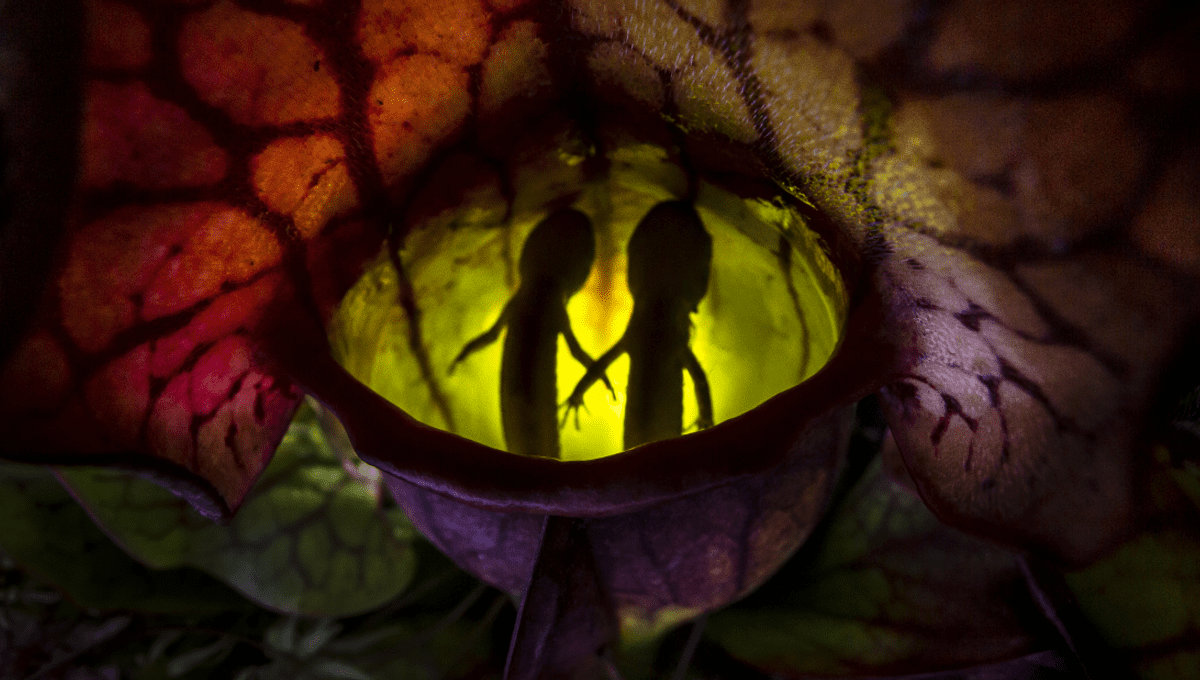
Two spotted salamanders seemingly holding hands as they bob in a carnivorous pitcher plant jacuzzi at matching stages of decay have scooped the Close-Up Photographer Of The Year (CUPOTY) Competition for Canadian photographer Samantha Stephens. Her winning shot, taken in Algonquin Provincial Park, won Stephens the £2,500 (~ US$3,000) cash prize and the CUPOTY 04 title and trophy.
“Typically, these plants feast on invertebrates – such as moths and flies – but recently, researchers at the Algonquin Wildlife Research Station discovered a surprising new item on the plant’s menu: juvenile Spotted Salamanders,” Stephens said in a release.
“On the day I made this image, I was following researchers on their daily surveys of the plants. Pitchers typically contain just one salamander prey at a time, although occasionally they catch multiple salamanders simultaneously. When I saw a pitcher that had two salamanders, both at the same stage of decay floating at the surface of the pitcher’s fluid, I knew it was a special and fleeting moment. The next day, both salamanders had sunk to the bottom of the pitcher.”
“This population of Northern Pitcher Plants is the first to be found regularly consuming a vertebrate prey. For a plant that’s used to capturing tiny invertebrate, a juvenile spotted salamander is a hefty feast!”
The pitcher plants, Nepenthes and Sarracenia, are carnivorous species with slippery rims that make it easy for curious animals to fall inside their jug-shaped bells. Inside, they’re submerged in a pool of liquid which might look benign, but you don’t want to spend too long here.
Fallen victims who are unable to get out are treated to a tissue-dissolving, enzyme-rich bath, breaking them down into an easily digestible pulp for the plant to feed on.
Like many carnivorous plants, pitchers evolved to consume such a wide variety of prey in response to the nutrient-poor environments they inhabit. Around a quarter of carnivorous plants are thought to be at risk of extinction owing to their highly-specific niches.
Other plants have nourishment aplenty in their surrounding soils, but those in more arid and unforgiving turf need to get inventive. Fortunately, lacking essential elements can be effectively foraged by liquifying passers-by, vertebrate or invertebrate. With their alluring nectar and slippery trap, the prey is just one false move away from a one-way train to smoothie town.
The Northern pitcher plant is in good company in the world of botany when it comes to species that pack a jump-scare. Alongside an Australian tree with a spider-like venom and the malodorous corpse flower that smells like dead bodies, it just goes to show that the world of botany is full of morbid but fascinating characters.
Source Link: Carnivorous Plant's Salamander Soup Wins Close-Up Photographer Of The Year